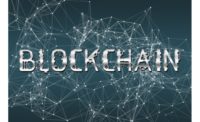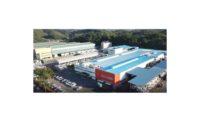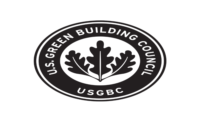The HVAC insulation market focuses on materials and techniques used to insulate heating, ventilation, and air conditioning systems, aiming for better energy efficiency and eco-friendliness. This market's growth is primarily driven by increasing demands for energy-saving HVAC systems, strict energy efficiency standards, and a global push towards sustainable building methods.
Predictions indicate that the worldwide HVAC insulation market will grow at a compound annual growth rate (CAGR) of 4.6%. This growth trajectory is expected to escalate its value from US$5.4 billion in 2023 to approximately US$7.4 billion by 2030.
The market's expansion is also attributed to an uptick in construction activities, particularly in the residential and commercial domains. Awareness about energy conservation is growing, and technological progressions are pushing the envelope further. Innovative insulation materials that deliver enhanced thermal efficiency are becoming the norm.
The incorporation of intelligent technologies into HVAC systems is another growth catalyst, elevating the demand for cutting-edge insulation solutions. The future prospects of the HVAC insulation market depend on several factors: the creation of high-performing insulation materials, regulatory frameworks promoting energy efficiency, and ongoing changes in construction methodologies. As competition intensifies, industry players are anticipated to allocate resources towards research, sustainability initiatives, and strategic partnerships to maintain their leadership positions.
Market Scope
Report Coverage |
Details |
|
Market Revenue 2023 |
US$5.4 Billion |
|
Estimated Revenue 2030 |
US$7.4 Billion |
|
Growth Rate - CAGR |
4.6% |
|
Forecast Period |
2023 to 2030 |
|
No. of Pages |
197 Pages |
|
Market Segmentation |
|
|
Regions Covered |
|
|
Key Companies Profiled |
|
|
Factors Driving Market Expansion Increased Emphasis on Energy-saving Insulation
The HVAC insulation market is experiencing significant growth due to several pivotal factors. To begin with, the worldwide focus on energy conservation and sustainable construction practices is amplifying the demand for efficient HVAC systems. This, in turn, boosts the necessity for sophisticated insulation solutions. The implementation of stringent energy efficiency guidelines and eco-friendly benchmarks intensifies this requirement, pushing industries to embrace insulation materials that bolster thermal efficiency. A notable increase in construction endeavors, especially within the residential and commercial arenas, is further fueling market expansion.
With ongoing urban development, the demand for adequately insulated structures to promote energy preservation and diminish environmental footprints is escalating. Furthermore, heightened awareness among consumers and businesses regarding the lasting advantages of energy-efficient HVAC systems and insulation components acts as a catalyst for market growth.
The role of technological progress is paramount, driving a transition towards novel and sustainable insulation materials. Materials that offer enhanced thermal efficiency while being environmentally conscious are gaining traction. The infusion of intelligent technologies into HVAC systems also contributes to this growth, emphasizing the need for advanced insulation solutions to maximize system performance.
Market Challenges
Rising Production Expenses
Volatility in the prices of raw materials, particularly those associated with insulation, can escalate production costs, thereby influencing market trends. Moreover, shifts in governmental regulations and construction guidelines pertaining to energy efficiency and ecological benchmarks can have a profound impact on market demand.
Economic scenarios and the level of construction activities are pivotal determinants, directly influencing the requirement for HVAC systems and subsequently affecting insulation material needs. To maintain consistent market performance, it's essential to adapt to emerging technological shifts and address supply chain complexities.
Challenges with Recycling Methods and Raw Material Expenses
The HVAC insulation sector might confront unpredictable raw material costs that could drive up production expenses. Further, adapting to ever-changing and strict regulations on energy efficiency and environmental norms can present compliance and adaptation hurdles. Economic volatility and construction activity variations may also introduce market uncertainties. To navigate these complexities, strategic measures like bolstering supply chain resilience, fostering innovation, and closely monitoring regulatory shifts are essential for ensuring consistent growth in this ever-evolving market landscape.
Opportunities for Growth Rising Demand for Sustainable Options:
The HVAC insulation sector offers promising avenues for expanding revenue through strategic initiatives. Market participants have a substantial chance to invest in creating and endorsing top-tier insulation materials. Pioneering solutions that provide superior thermal performance, longevity, and ecological benefits can resonate well with industries that are increasingly emphasizing energy-conserving alternatives.
Furthermore, there's a growing market for insulation materials that are environmentally conscious and recyclable. Given the escalating emphasis on sustainable practices, manufacturers in the HVAC insulation realm can seize this opportunity by delivering materials that resonate with eco-friendly construction methods and aid in diminishing carbon emissions.
Forming strategic alliances and partnerships with pivotal entities within the HVAC sector, such as system manufacturers, contractors, and energy experts, can facilitate mutual growth. Collaborative efforts enable insulation producers to ensure their offerings seamlessly merge with energy-efficient HVAC setups, delivering holistic solutions to consumers.
Moreover, harnessing digital innovations and analytics can optimize HVAC system performance. Providing insulation solutions that harmonize with intelligent HVAC systems and enhance overall operational efficiency can pave the way for revenue growth. Key growth prospects in the HVAC insulation market encompass material innovation, emphasis on sustainable alternatives, collaborative partnerships, and alignment with the rising wave of intelligent HVAC solutions. Embracing these avenues sets the stage for enduring growth and market leadership.
Evolution of Key Trends in the HVAC Insulation Market: A Comprehensive Overview:
In the HVAC insulation market, several key trends are shaping the industry landscape. Material advancements remain at the forefront, with continuous developments introducing innovative solutions like aerogels and phase change materials, enhancing both thermal efficiency and durability. Concurrently, the integration of IoT technologies is paving the way for smart insulation systems, enabling real-time monitoring and optimization to boost energy efficiency.
Sustainability remains a driving force, with manufacturers prioritizing eco-friendly solutions that align with stringent environmental standards. Additionally, the digital transformation is evident, as the industry increasingly leverages data analytics tools for predictive maintenance and system optimization, ensuring enhanced reliability and minimized downtime.
Innovations also extend to integrating HVAC insulation with renewable energy sources like solar and geothermal energy, further optimizing energy efficiency. The market is witnessing a surge in demand for customized solutions tailored to specific industry needs, emphasizing optimized performance and cost-efficiency. Lastly, regulatory compliance remains paramount, with a focus on meeting or exceeding evolving energy efficiency regulations and building codes, driving continuous innovation and product enhancement.
Competitive Insights in HVAC Insulation
Competitive Insights in HVAC Insulation Leading players like Owens Corning, Saint-Gobain, and Knauf Insulation dominate the HVAC insulation market through innovation, product diversification, and strategic partnerships. These companies prioritize eco-friendly, efficient insulation solutions, emphasizing sustainability and customer-centric approaches. Aligning with global sustainability goals and regulatory trends, they focus on technological innovation and market expansion to maintain their competitive edge.
Key Players:
- Owens Corning: A multinational company recognized for its expertise in insulation, roofing, and fiberglass composites. Owens Corning emphasizes innovation and sustainability, providing solutions that enhance energy efficiency and environmental performance.
- Saint-Gobain: A global leader specializing in designing, manufacturing, and distributing construction materials. Saint-Gobain is renowned for its innovative solutions in sustainable building materials, including advanced HVAC insulation products.
- Knauf Insulation: A prominent player known for its focus on thermal and acoustic insulation solutions. Knauf Insulation prioritizes eco-friendly products, emphasizing energy efficiency, durability, and environmental sustainability in its insulation offerings.
Market Segmentation for HVAC Insulation:
-
By Material Type:
- Fiberglass
- Foam Board
- Mineral Wool
- Aerogel
- Others (such as cellulose, natural fibers)
-
By Application:
- Residential Buildings
- Commercial Buildings
- Industrial Facilities
- Others (like automotive, aerospace)
-
By End-User:
- HVAC System Manufacturers
- Contractors & Builders
- Homeowners
- Commercial Building Owners
- Industrial Plant Managers
-
By Region:
- North America
- Europe
- Asia-Pacific
- Middle East & Africa
- South America
-
By Sustainability Focus:
- Eco-friendly Insulation
- Energy-efficient Solutions
- Recyclable Materials
- Green Building Compliance
-
By Distribution Channel:
- Direct Sales (OEMs)
- Distributors & Wholesalers
- Online Retailers
- Specialty Stores
This segmentation provides a structured view of the HVAC insulation market, allowing businesses to target specific segments based on their strategic objectives and market dynamics.
Market Segmentation Overview
- Leading Insulation Material: Glass Wool Emerges as the Premier Choice
- Glass wool is poised to dominate the market due to its exceptional insulation capabilities, adaptability, and broad industry application. Renowned for its thermal and acoustic insulation properties, along with fire resistance, glass wool stands out as a top contender. The escalating demand for sustainable, energy-efficient building materials further cements glass wool's leading position, contributing significantly to the insulation materials sector's revenue
- Rapid Growth Sector: Commercial Buildings Drive Demand
- The commercial construction sector emerges as a pivotal focus for HVAC insulation. As energy efficiency and sustainability become paramount in commercial settings, there's an escalating need for efficient insulation to optimize HVAC systems. Embracing green building initiatives, businesses prioritize HVAC insulation to elevate energy efficiency and diminish environmental footprints, positioning the commercial sector at the forefront of demand and revenue generation.
- Expanding Market Segment: Residential Sector Gains Momentum
- The residential segment is set to experience accelerated growth in the HVAC insulation arena. Fueled by heightened awareness of energy efficiency, demand for enhanced living comfort, and government-led sustainable construction initiatives, homeowners increasingly seek insulation solutions. This trend positions the residential sector as a vital contributor to the surging demand for HVAC insulation
Leading Regional Markets
North America's Emphasis on Retrofitting Boosts Its Market Dominance
North America is set to maintain its leading position in the HVAC insulation market, primarily driven by advancements in insulation technologies. The region's adoption of innovative materials like aerogels and vacuum insulation panels, coupled with a robust commitment to energy conservation in construction, solidifies its global leadership.
Government incentives and sustainable construction regulations amplify the demand for top-tier insulation products. Moreover, the region's focus on upgrading existing structures for improved energy efficiency propels the need for advanced HVAC insulation solutions. Ongoing innovation, heightened environmental consciousness, and the incorporation of intelligent technologies in insulation systems are anticipated to uphold North America's supremacy.
Asia Pacific Emerges as a Growth Hub Backed by Government Support
Asia Pacific offers promising growth prospects for HVAC insulation producers. Rapid urban and industrial growth in the region drives demand for energy-saving building solutions. Government-led sustainable construction initiatives and the surge in green building practices foster a conducive market environment.
In nations like China and India, manufacturers have an opportunity to penetrate the expanding construction market by introducing innovative and sustainable HVAC insulation products. The escalating focus on energy preservation and improving building thermal efficiency further enhances the region's market potential.
Future Prospects and Innovations in HVAC Insulation
The HVAC insulation landscape is set for transformative changes, driven by advancements in materials like aerogels and phase change materials. The industry will witness the rise of smart insulation systems enabled by IoT technologies, allowing real-time monitoring and optimization for enhanced energy efficiency. A growing emphasis on eco-friendly solutions will drive the development of sustainable, recyclable materials, while digitalization and data analytics will facilitate predictive maintenance and performance optimization. Furthermore, integration with renewable energy sources and customized solutions tailored to specific industry needs will shape the future, with strict adherence to evolving regulatory standards ensuring market relevance and competitiveness.




